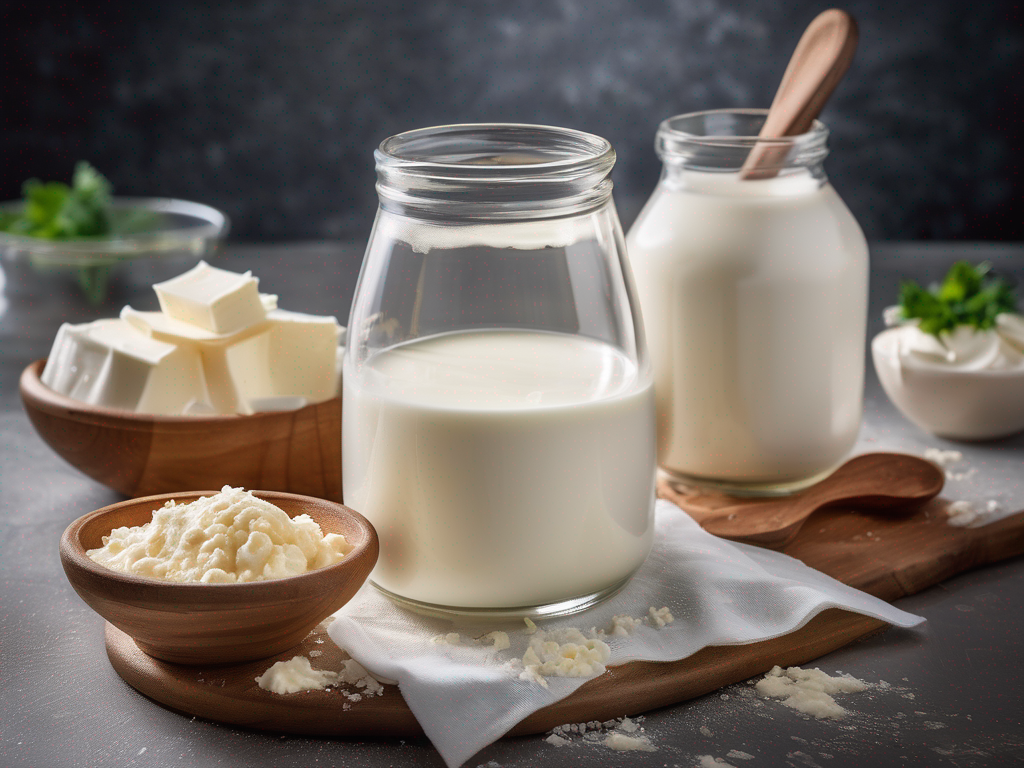
Is Expired Buttermilk Safe to Use in Baking Recipes?
Is Expired Buttermilk Safe to Use in Baking Recipes?
Buttermilk is a versatile ingredient in baking, adding tanginess and moisture to recipes like pancakes, cakes, and biscuits. However, like all dairy products, buttermilk has a limited shelf life, and it's important to ensure its safety when using it in recipes. In this blog post, we will explore whether expired buttermilk is safe to use in baking recipes, how to determine if it has gone bad, and practical tips for storing and using buttermilk safely. (Buttermilk)
Understanding Buttermilk Expiration
Buttermilk typically has a shelf life of about 2 weeks when stored in the refrigerator at the recommended temperature of 40°F (4°C). However, the expiration date printed on the packaging is a guideline for peak freshness, and buttermilk may still be safe to use after this date under certain conditions.
Signs of Spoiled Buttermilk
Before using expired buttermilk in baking, it's crucial to check for signs of spoilage. Some indicators that buttermilk has gone bad include:
- Off odor: If the buttermilk smells sour, rancid, or has an unpleasant odor, it is likely spoiled.
- Unusual texture: Spoiled buttermilk may appear curdled, lumpy, or separated, indicating that it has soured.
- Mold: Visible mold growth on the surface of the buttermilk is a clear sign of spoilage and should be discarded.
If you observe any of these signs, it's best to err on the side of caution and not use the buttermilk in your baking recipes.
Safety Considerations When Using Expired Buttermilk
Baking at High Temperatures
One important factor to consider when using expired buttermilk in baking is the temperature at which the recipe will be cooked. Baking at high temperatures, such as when making bread or muffins, can help kill off any harmful bacteria that may be present in expired buttermilk. However, it's essential to ensure that the buttermilk is only slightly past its expiration date and does not exhibit any signs of spoilage.
Risk of Foodborne Illness
While using slightly expired buttermilk in baking recipes may be safe in some cases, it's crucial to be aware of the risk of foodborne illness. Consuming spoiled dairy products can lead to gastrointestinal issues, including stomach cramps, diarrhea, and nausea. If you are unsure about the safety of expired buttermilk, it's best to discard it and use fresh buttermilk in your recipes to avoid any potential health risks.
Practical Tips for Storing Buttermilk Safely
To ensure the longevity and safety of your buttermilk, follow these practical tips for storing and handling this dairy product:
- Refrigerate promptly: After purchasing buttermilk, store it in the refrigerator as soon as possible to maintain its freshness.
- Check the temperature: Keep your refrigerator at 40°F (4°C) or below to slow down bacterial growth in dairy products.
- Use airtight containers: Transfer buttermilk to a clean, airtight container to prevent odors from the fridge from affecting its flavor.
- Label and date: Write the date of purchase on the buttermilk container to track its freshness and expiration.
- Use it promptly: Try to use up buttermilk within its recommended shelf life to enjoy its full flavor and quality.
By following these tips, you can prolong the shelf life of your buttermilk and reduce the risk of spoilage.
Conclusion
In conclusion, while using slightly expired buttermilk in baking recipes may be safe under certain conditions, it's essential to be vigilant for signs of spoilage and exercise caution to prevent foodborne illness. By understanding the expiration indicators of buttermilk, following proper storage practices, and considering the cooking temperature of your recipes, you can enjoy the benefits of this dairy product in your baking endeavors. Remember, when in doubt, it's always better to discard expired buttermilk and opt for fresh, high-quality ingredients to ensure the safety and deliciousness of your baked goods. (Buttermilk)
Authoritative Food Safety References
These agencies and university labs inform every tip and health precaution we publish.
USDA FoodKeeper – Cold Storage Guidelines
Official refrigerator, freezer, and pantry timelines maintained by the U.S. Department of Agriculture.
Visit USDA FoodKeeperFDA Produce Safety Rule & Grower Guidance
Field-to-fridge handling practices that prevent contamination of fruits, vegetables, and leafy greens.
Visit FDA Produce SafetyCDC Foodborne Illness Prevention Hub
Surveillance-backed guidance on pathogens, symptoms, and steps to reduce foodborne illness risk.
Visit CDC Food SafetyUC Davis Postharvest Technology Center
University research detailing optimal storage atmospheres for produce after harvest.
Visit UC Davis PostharvestPenn State Extension – Home Food Preservation & Safety
Peer-reviewed extension bulletins on safe canning, chilling, and reheating practices.
Visit Penn State ExtensionScan your food directly and get instant safety info using our AI-powered camera feature.